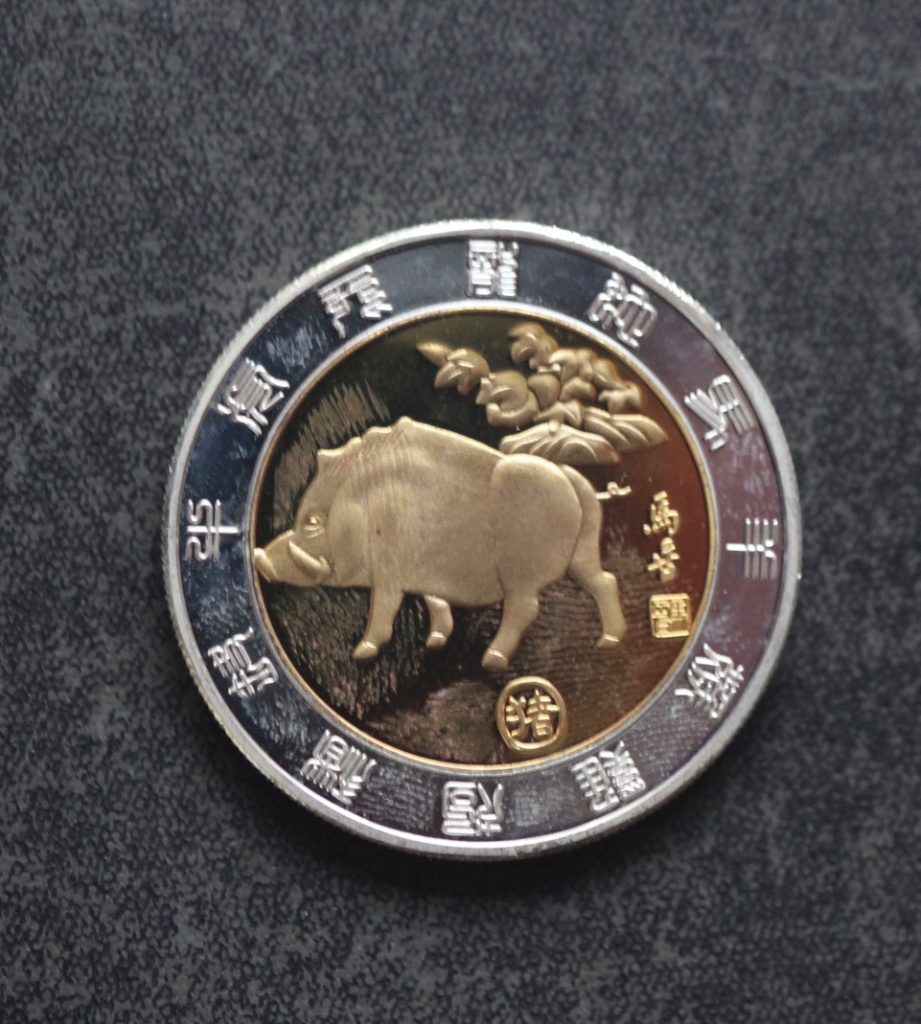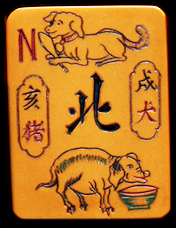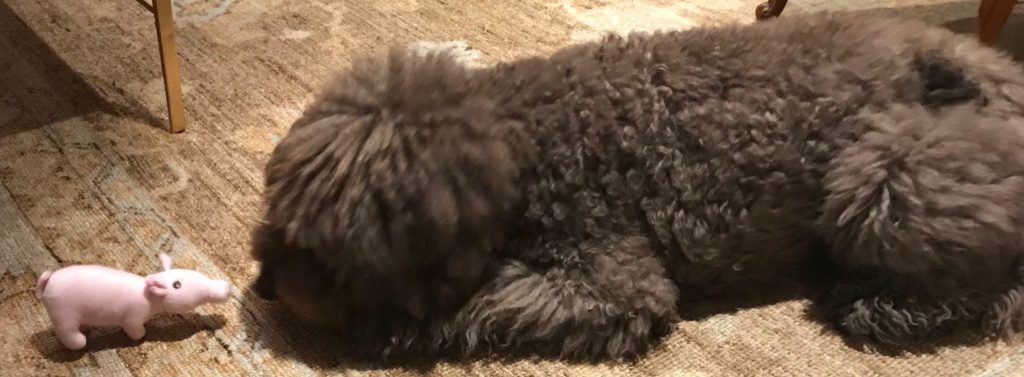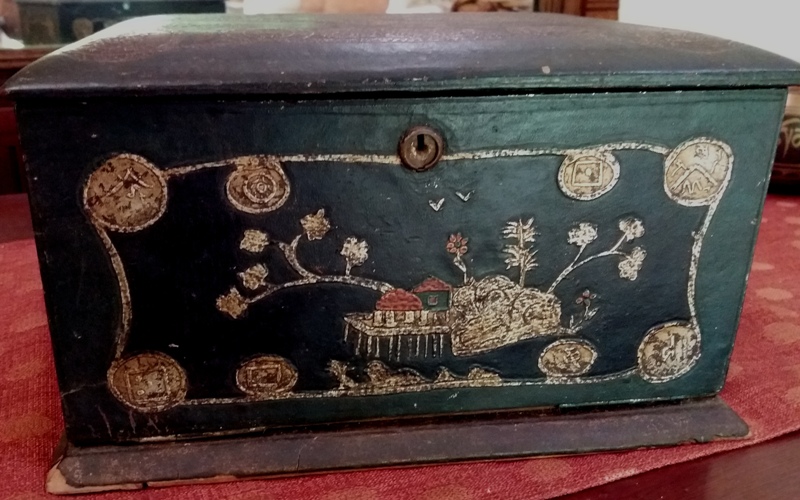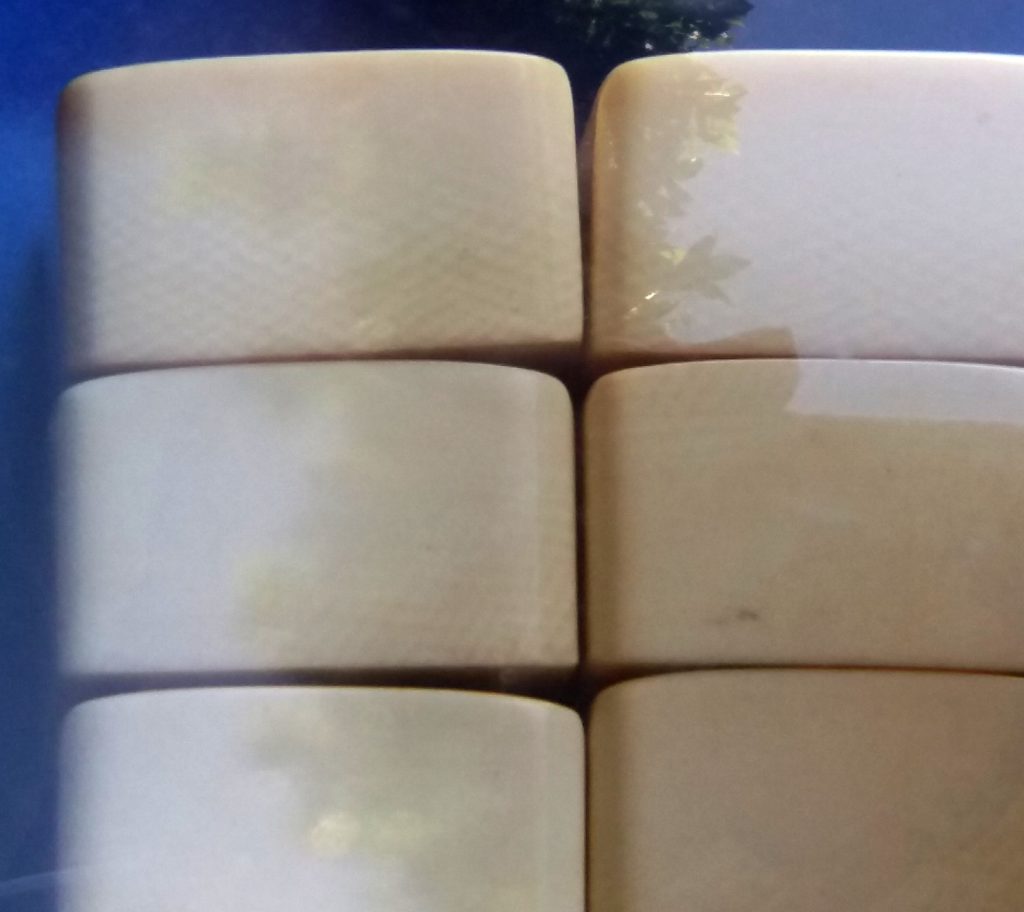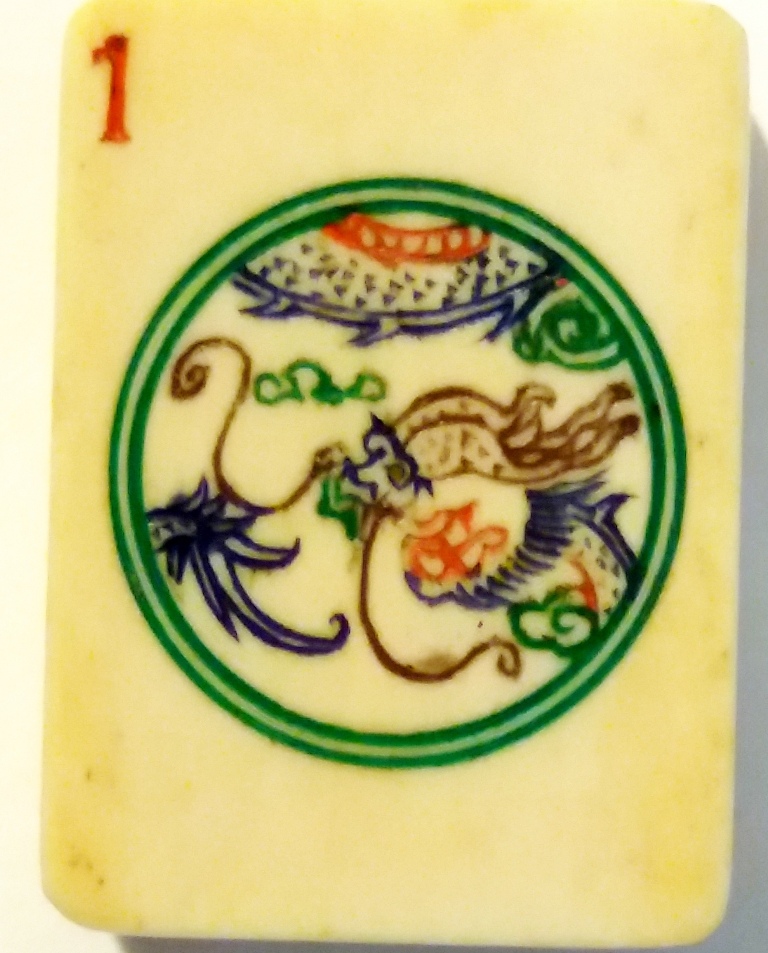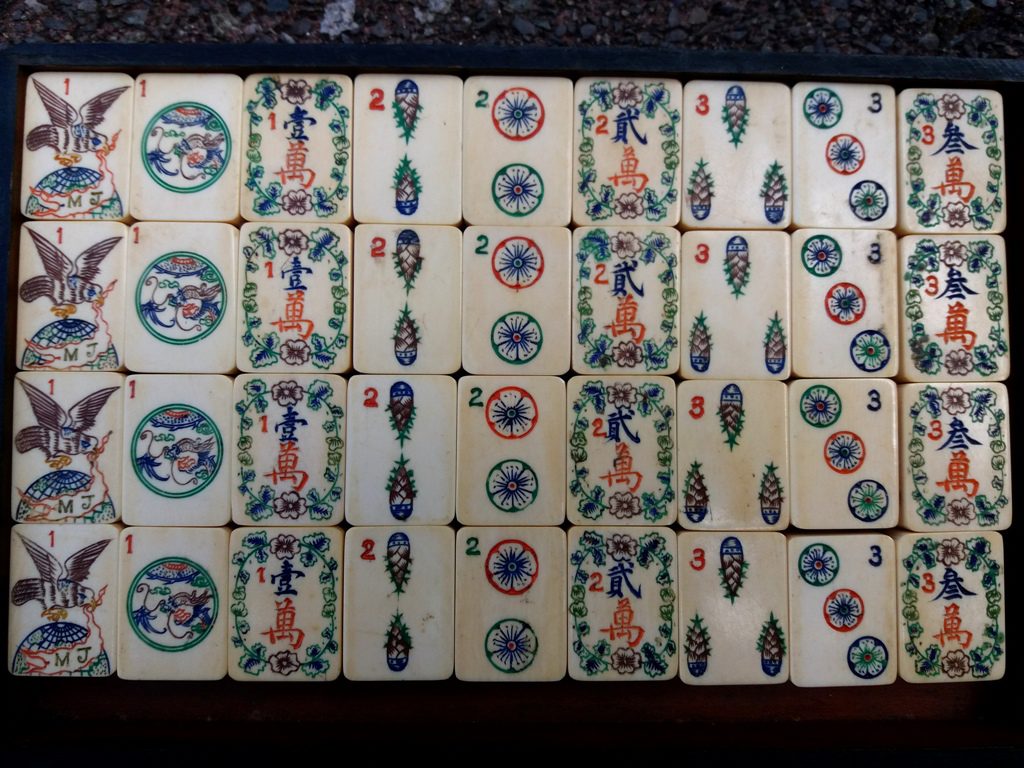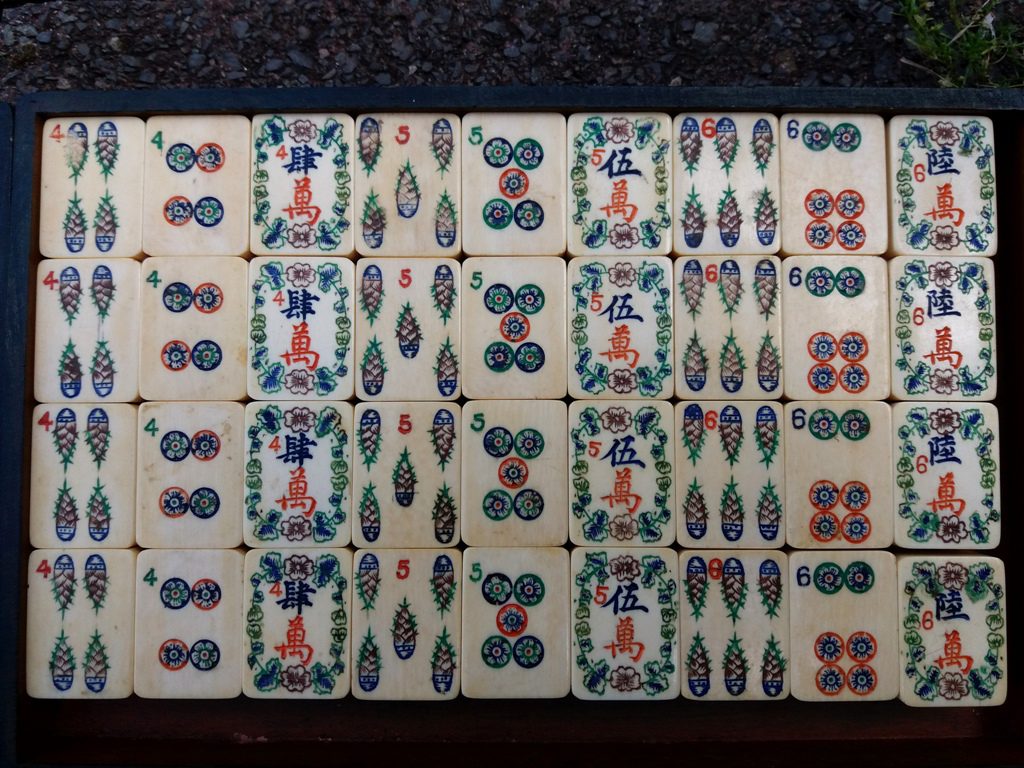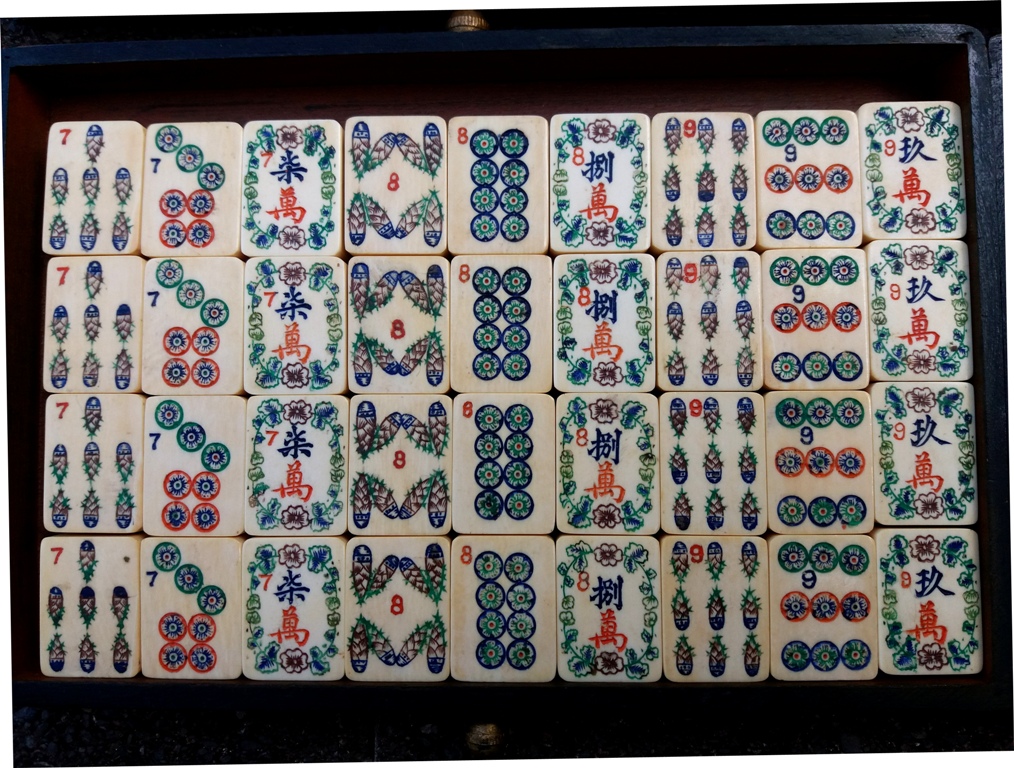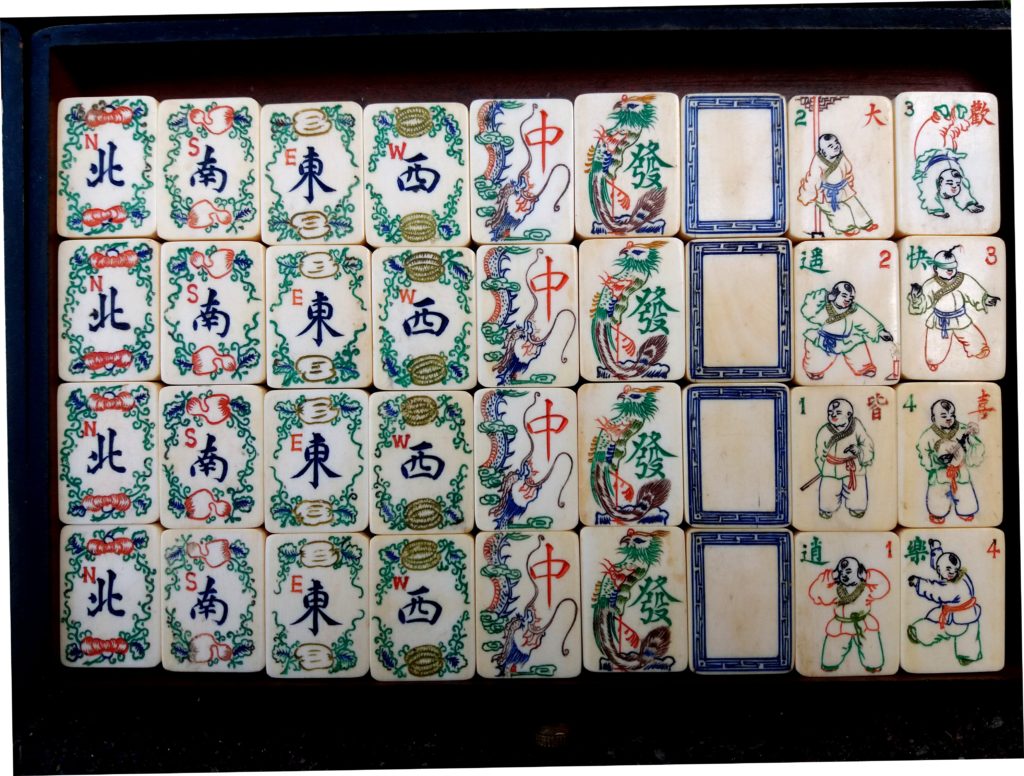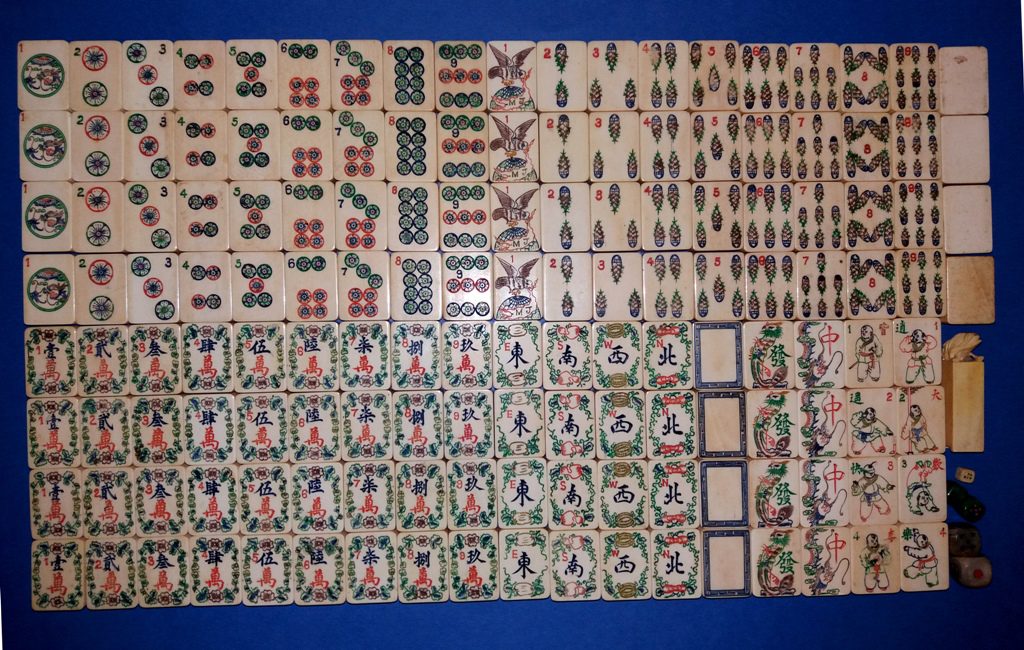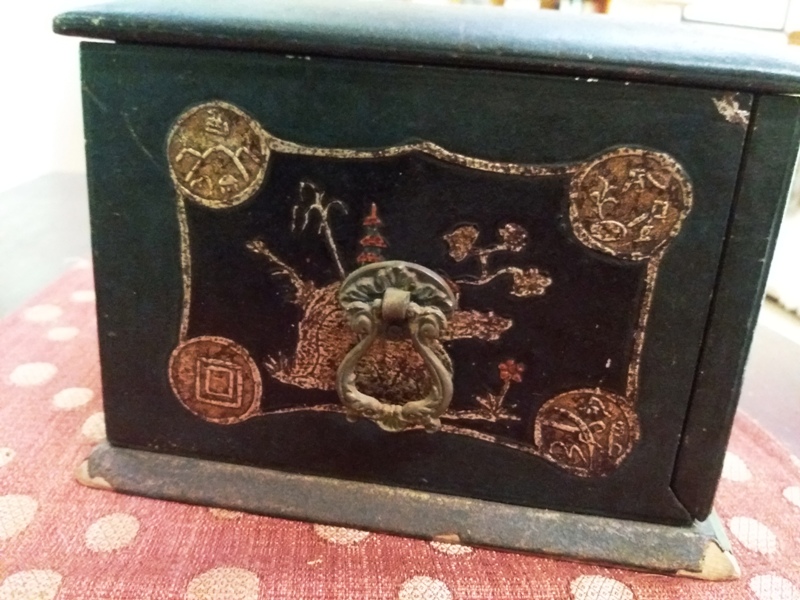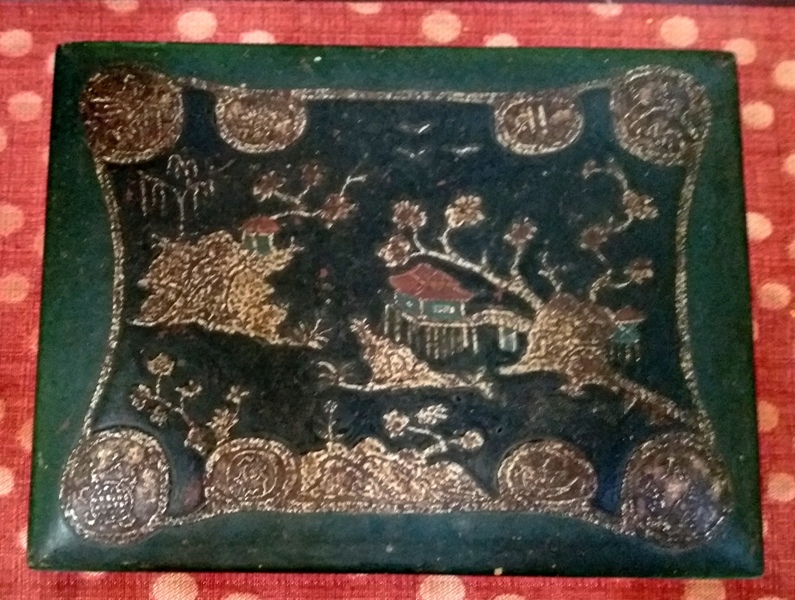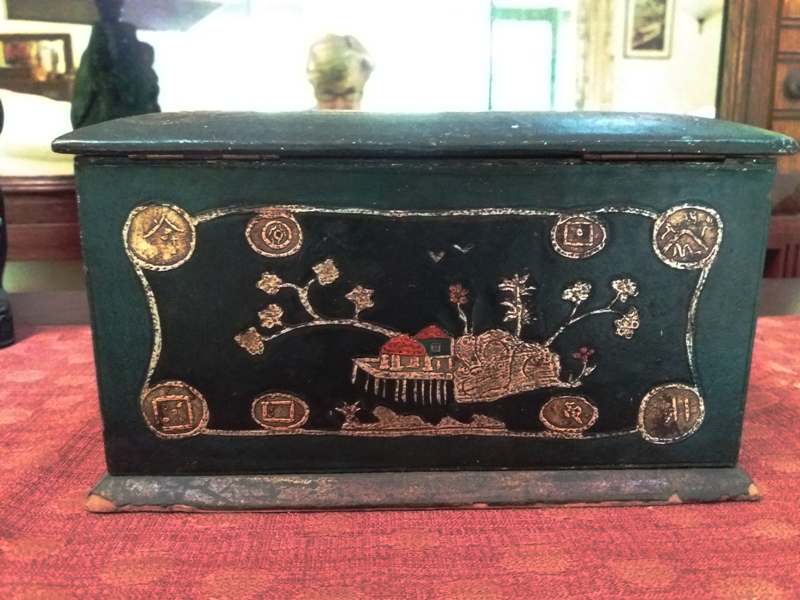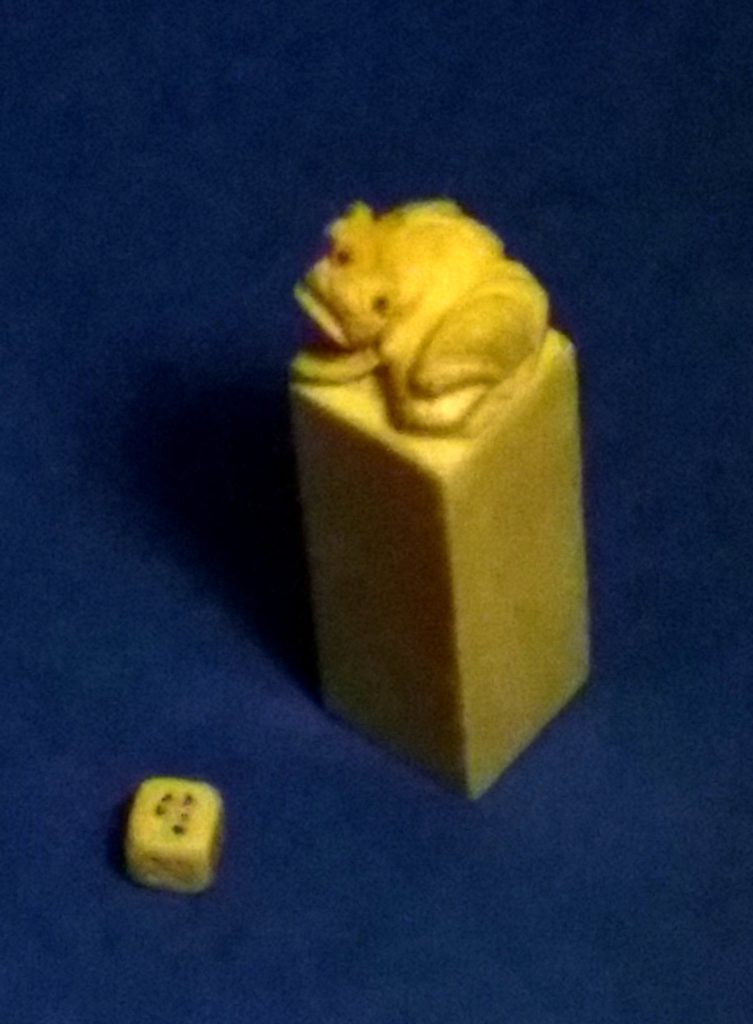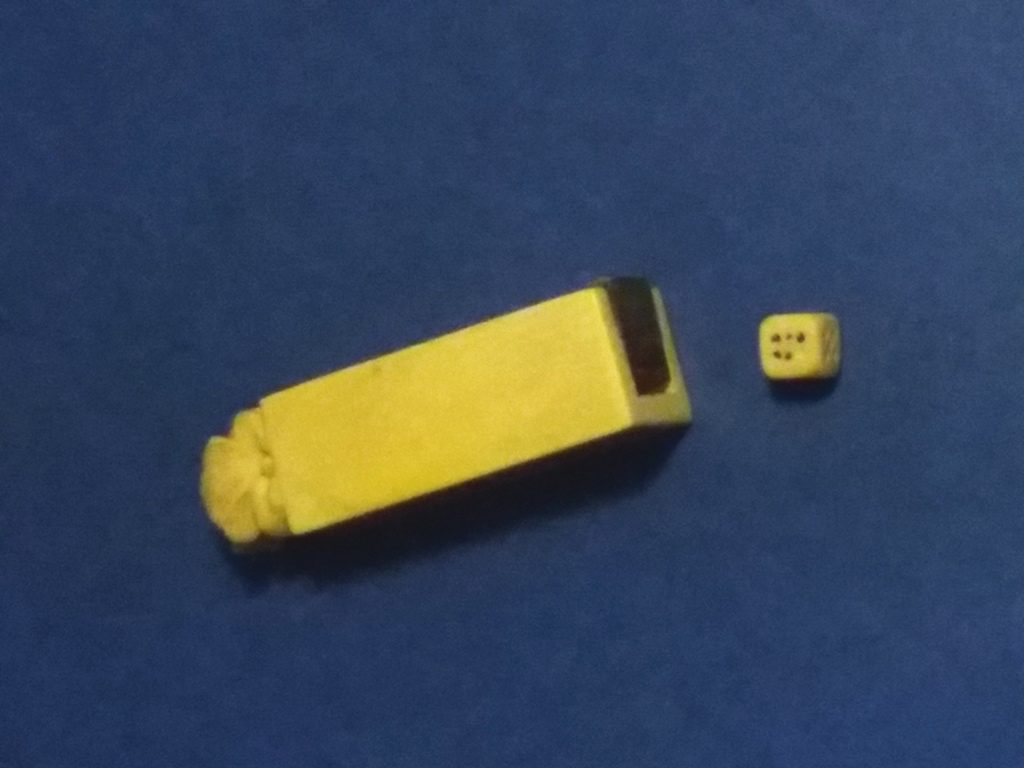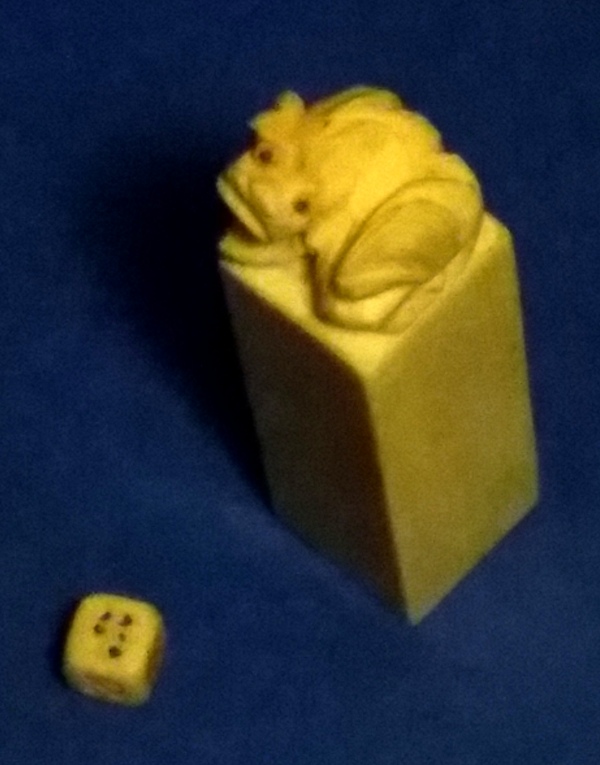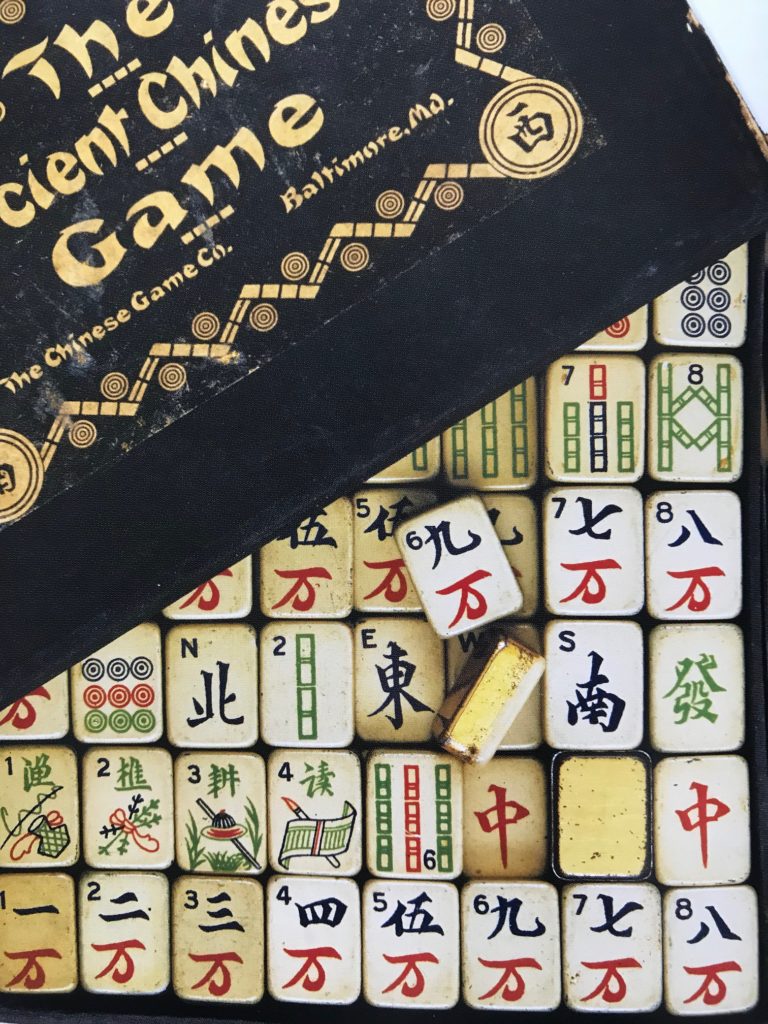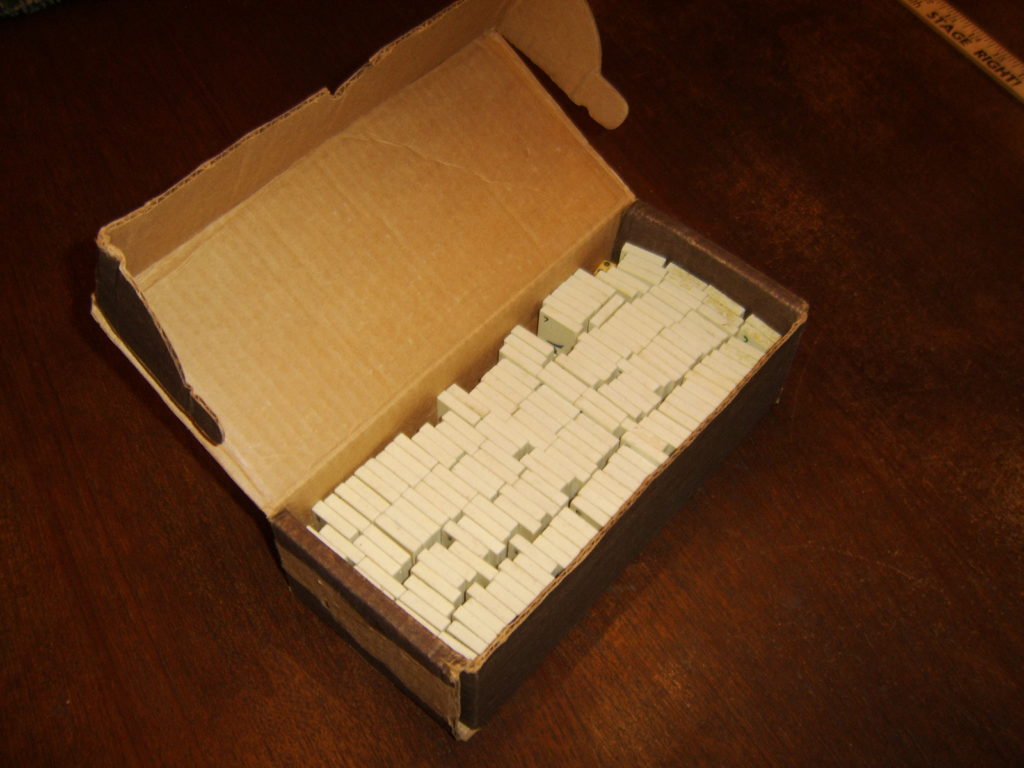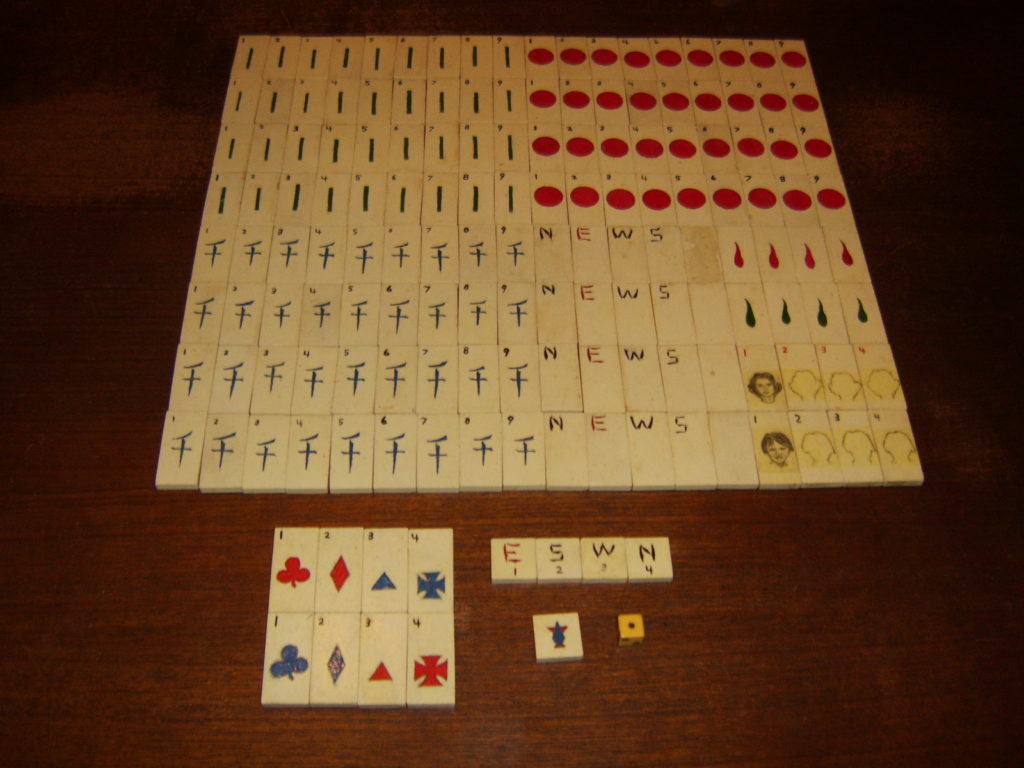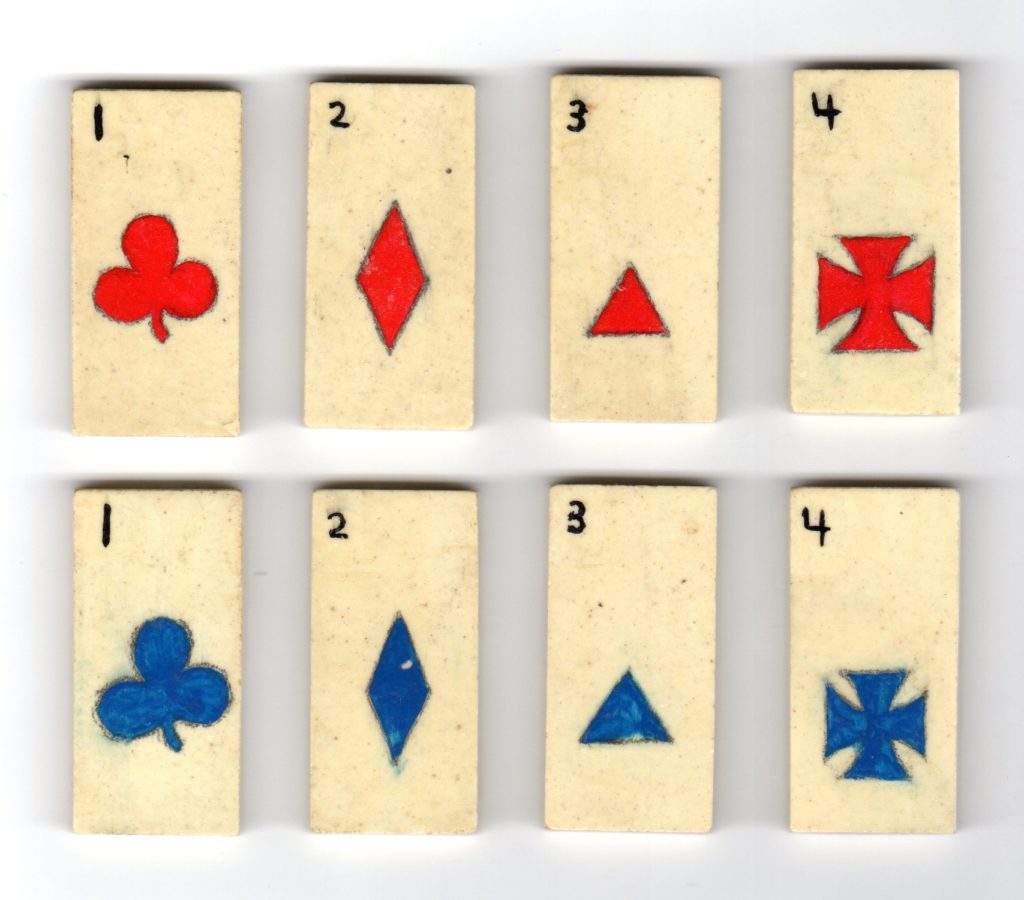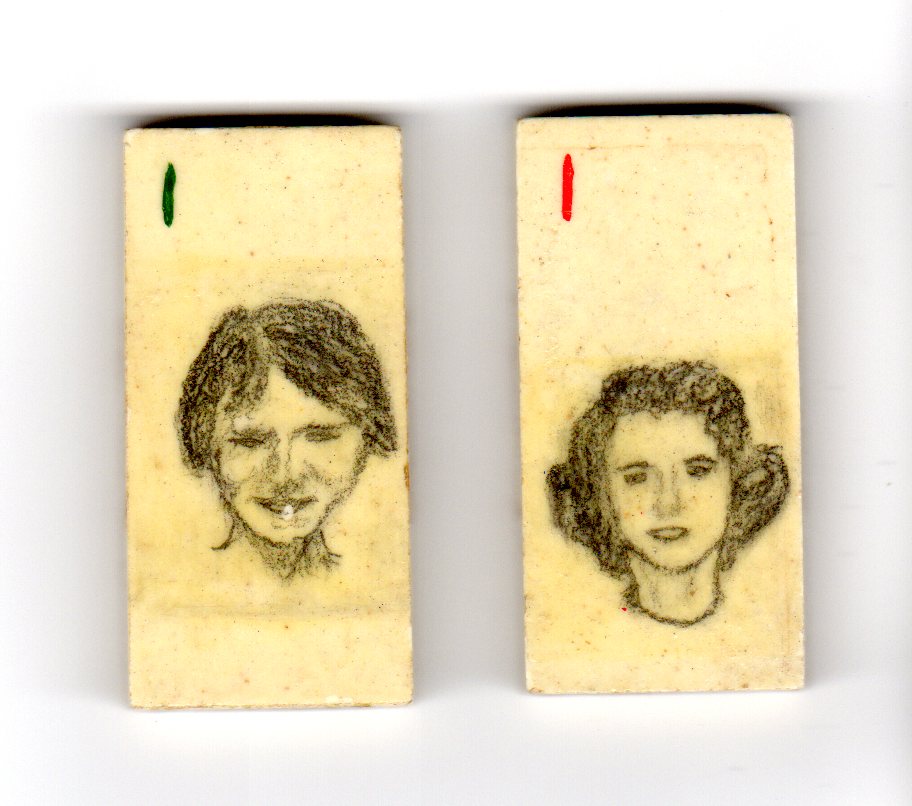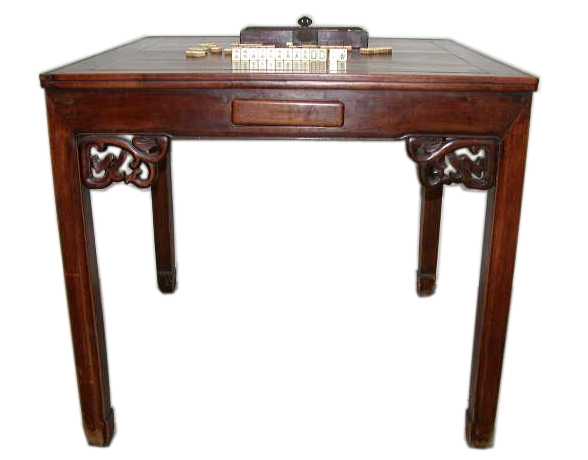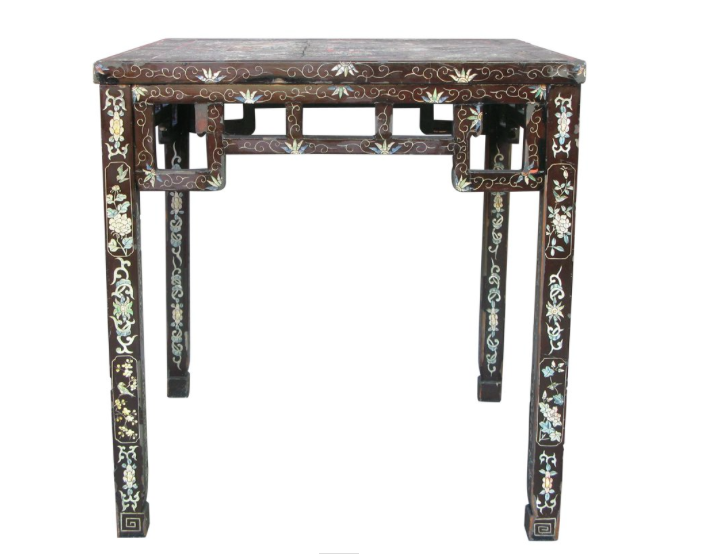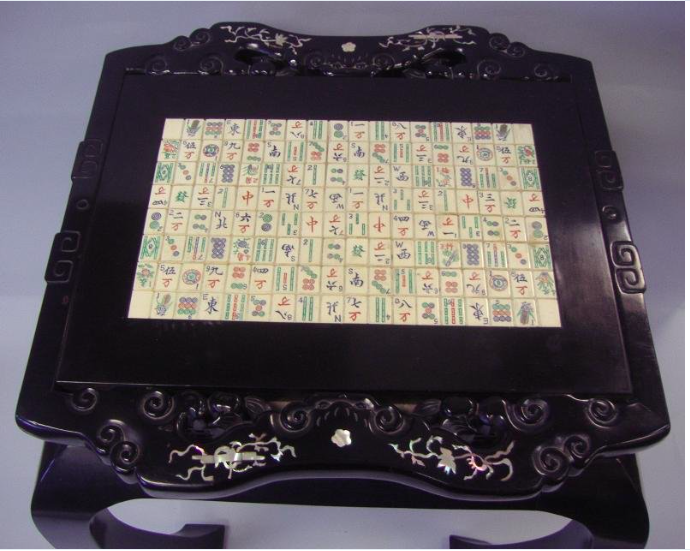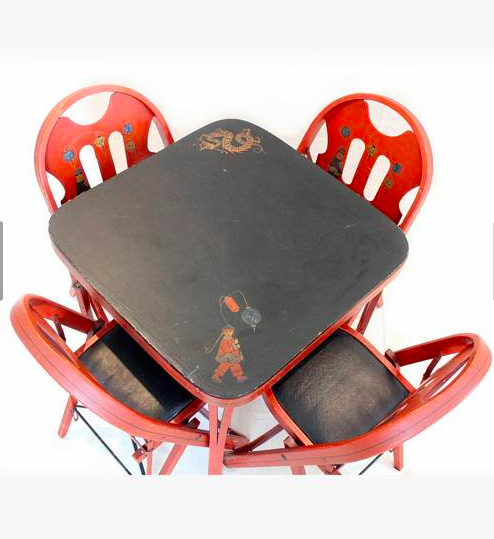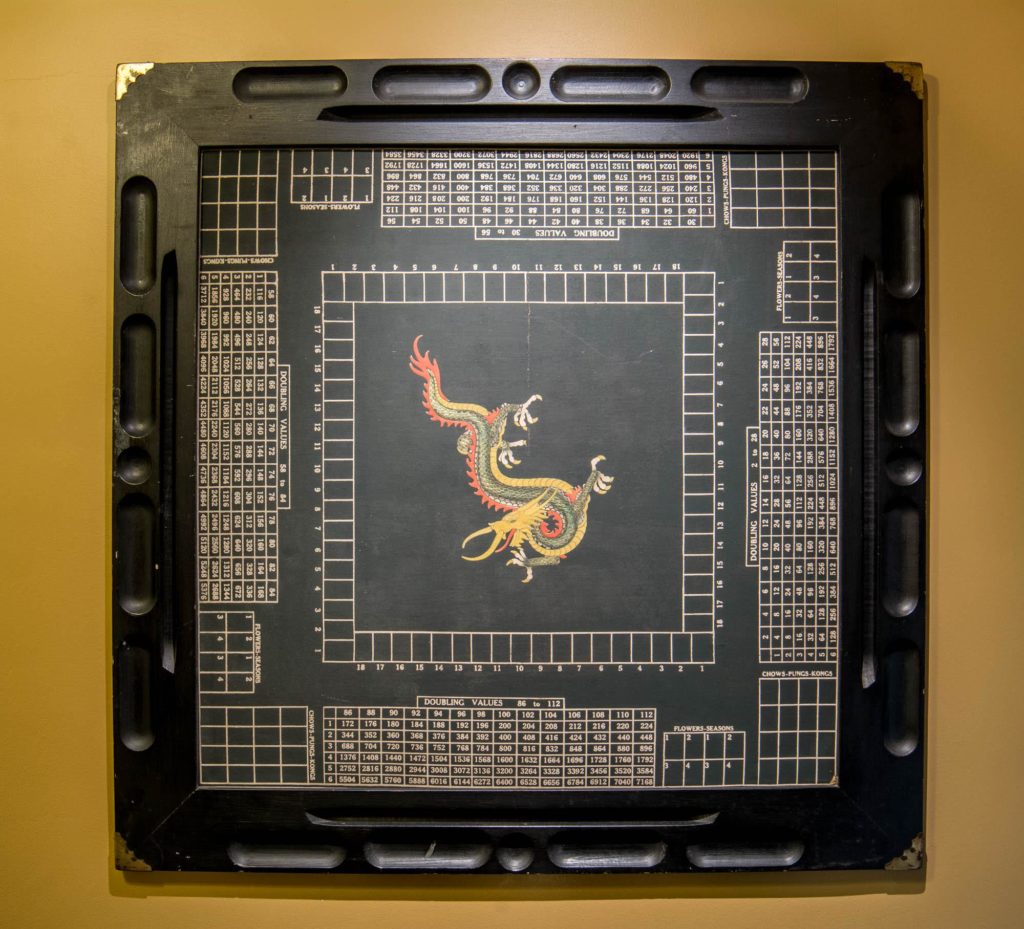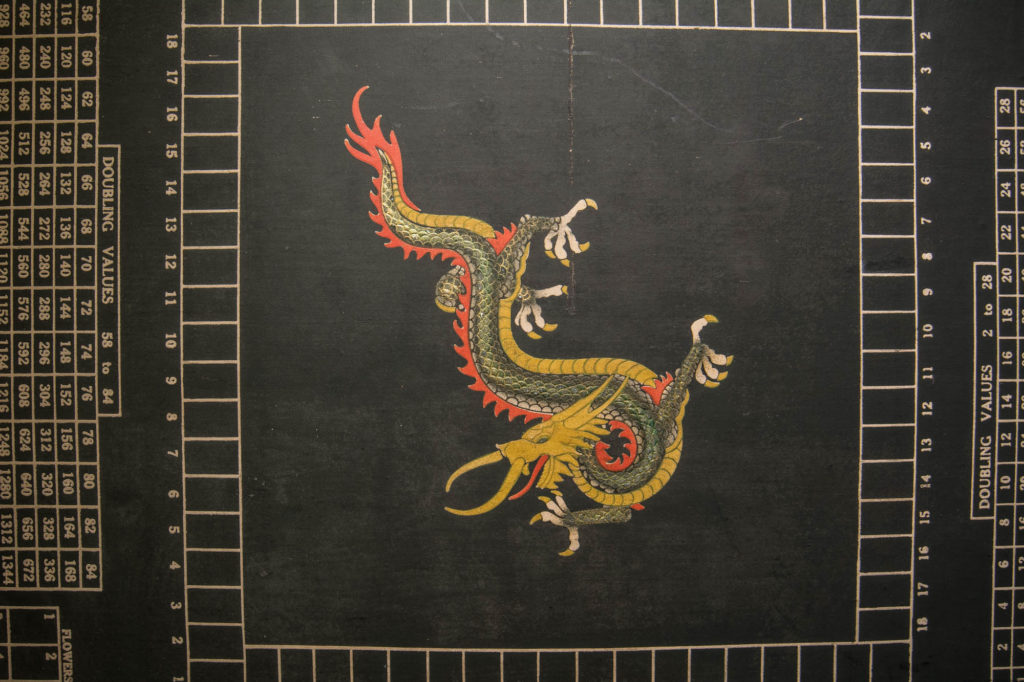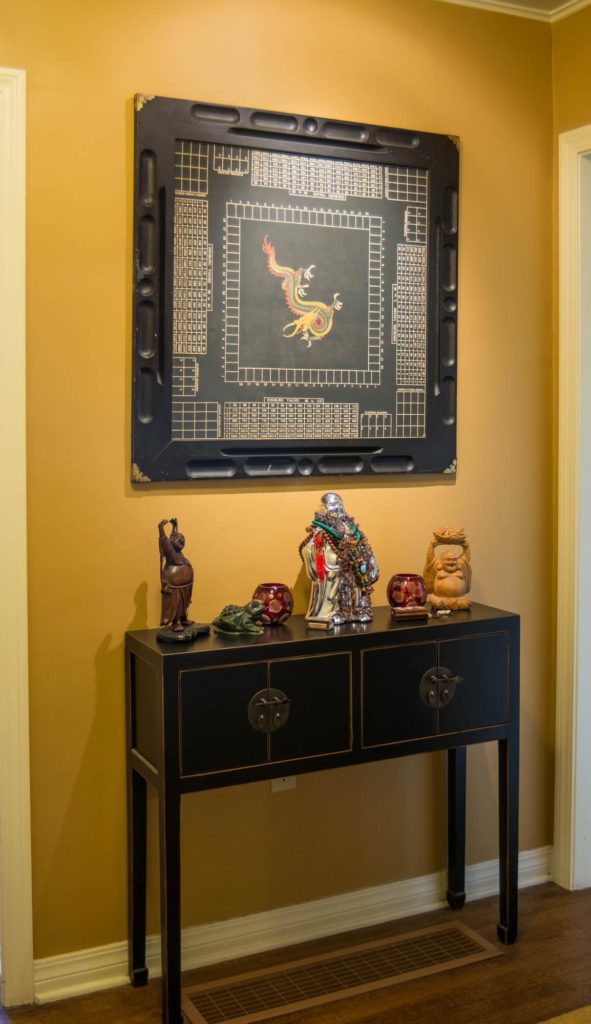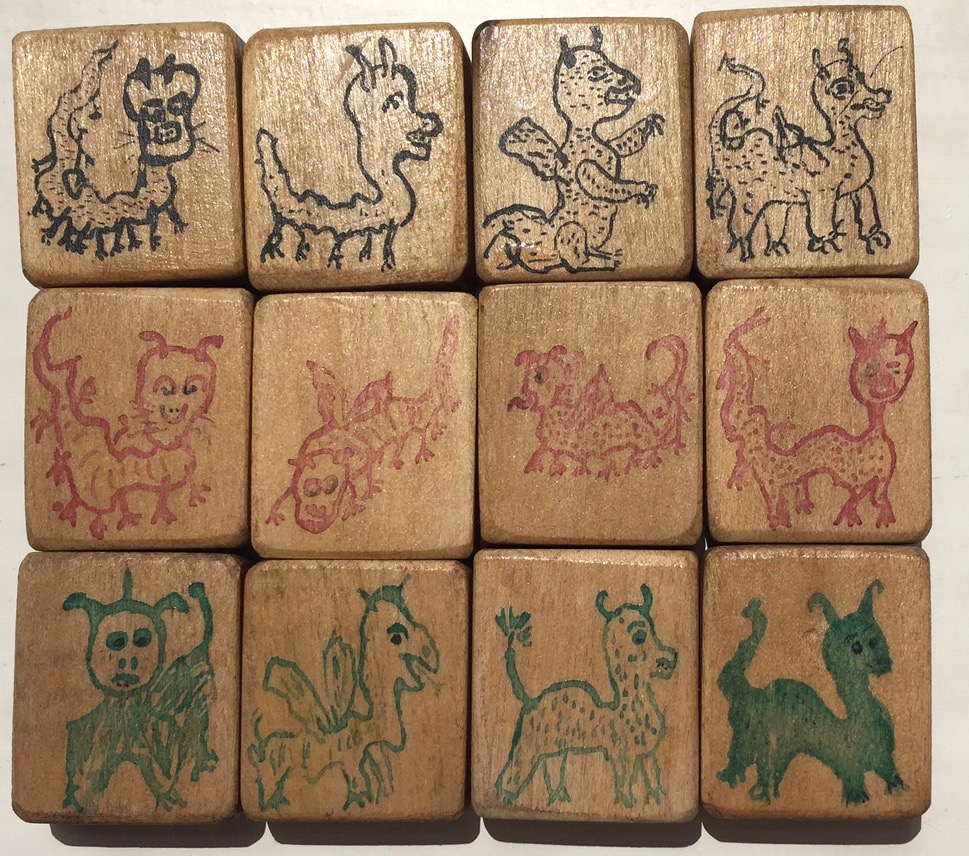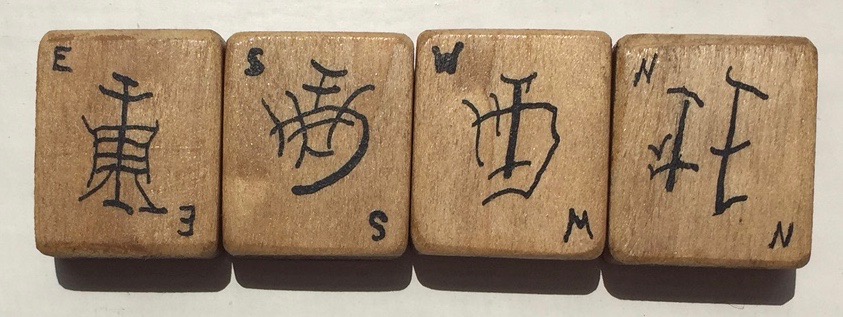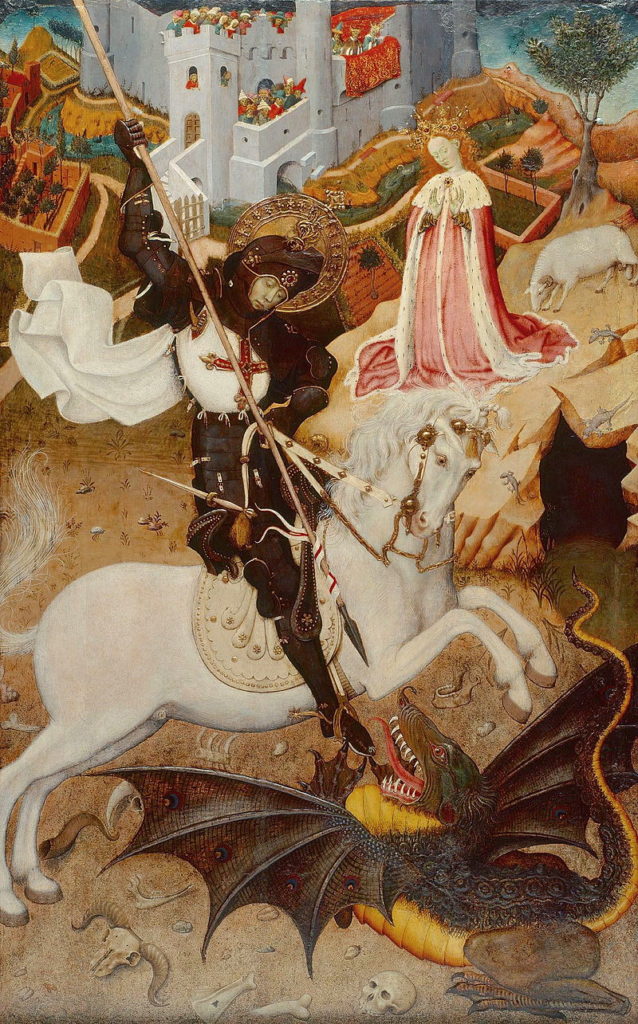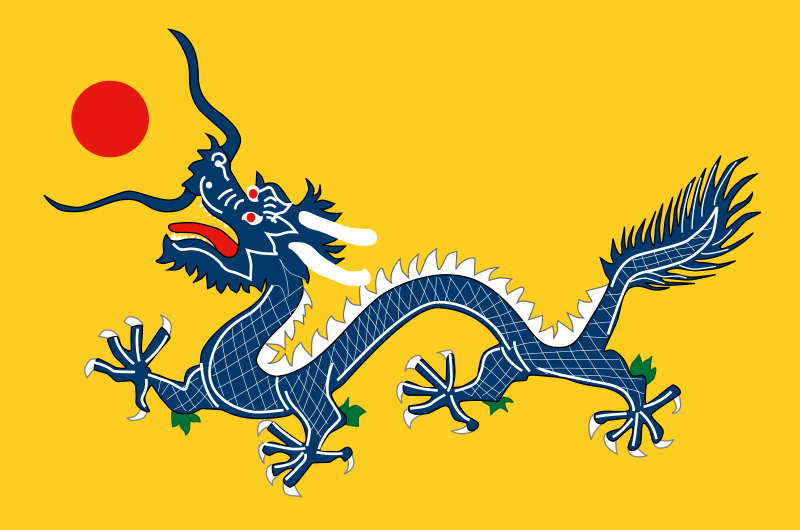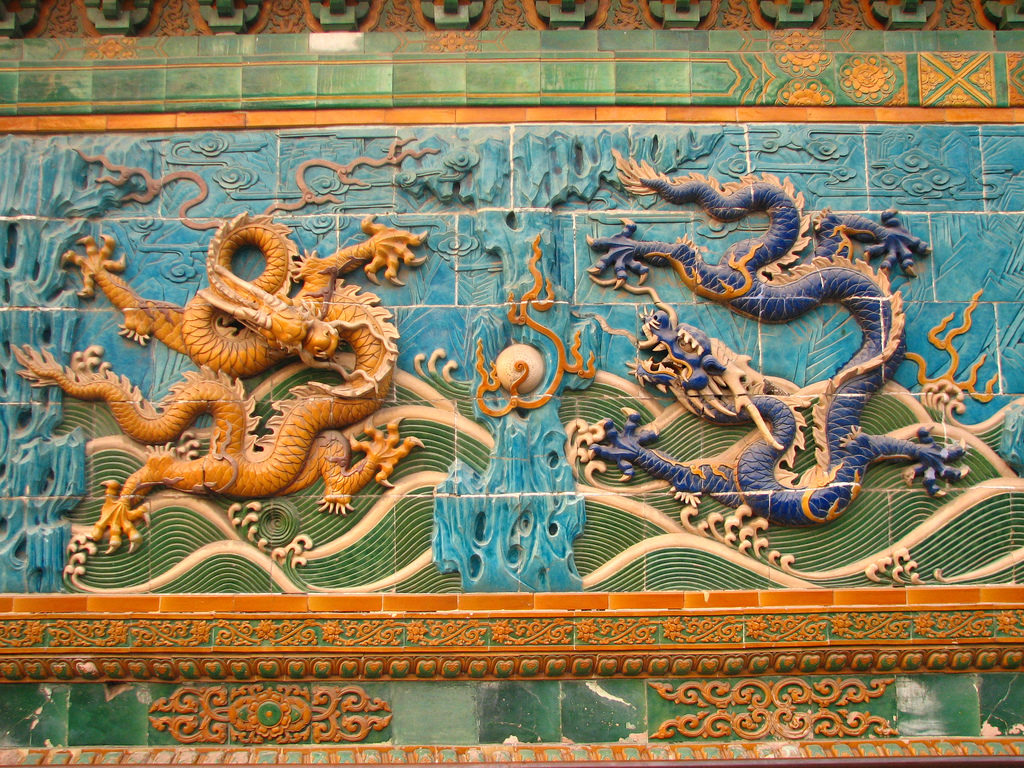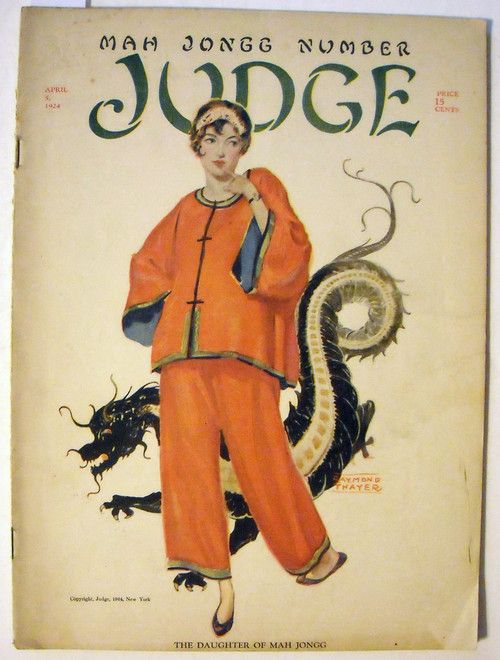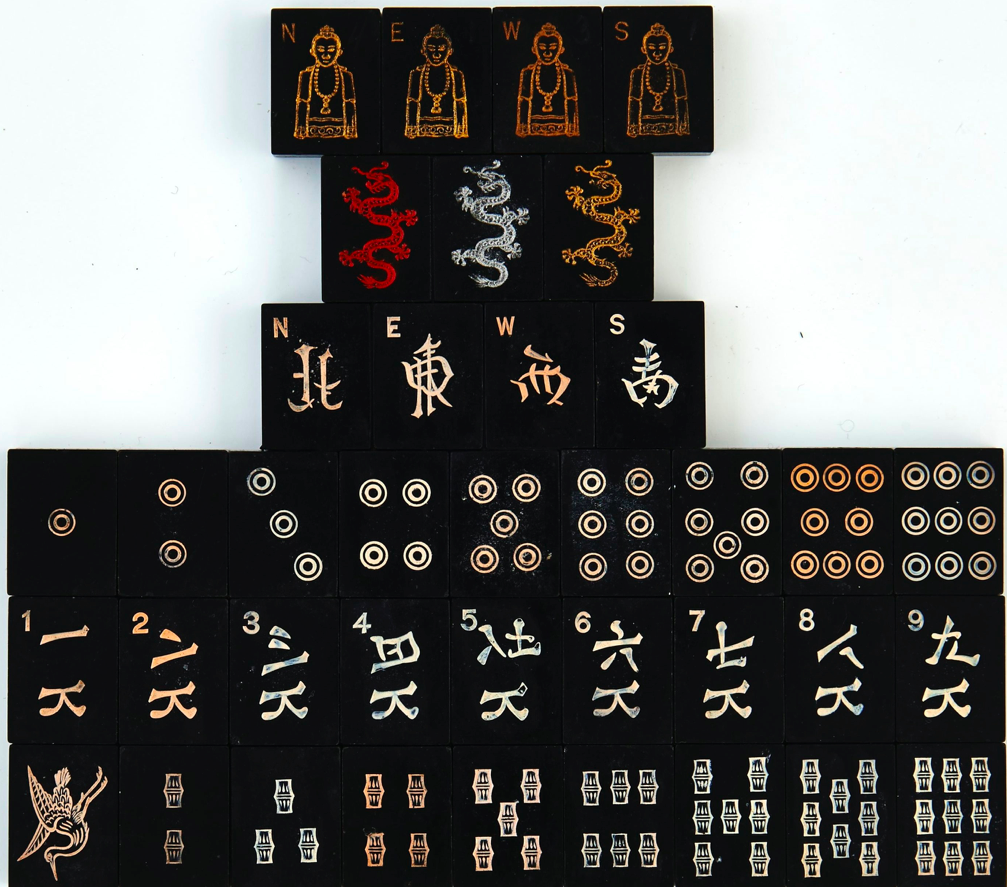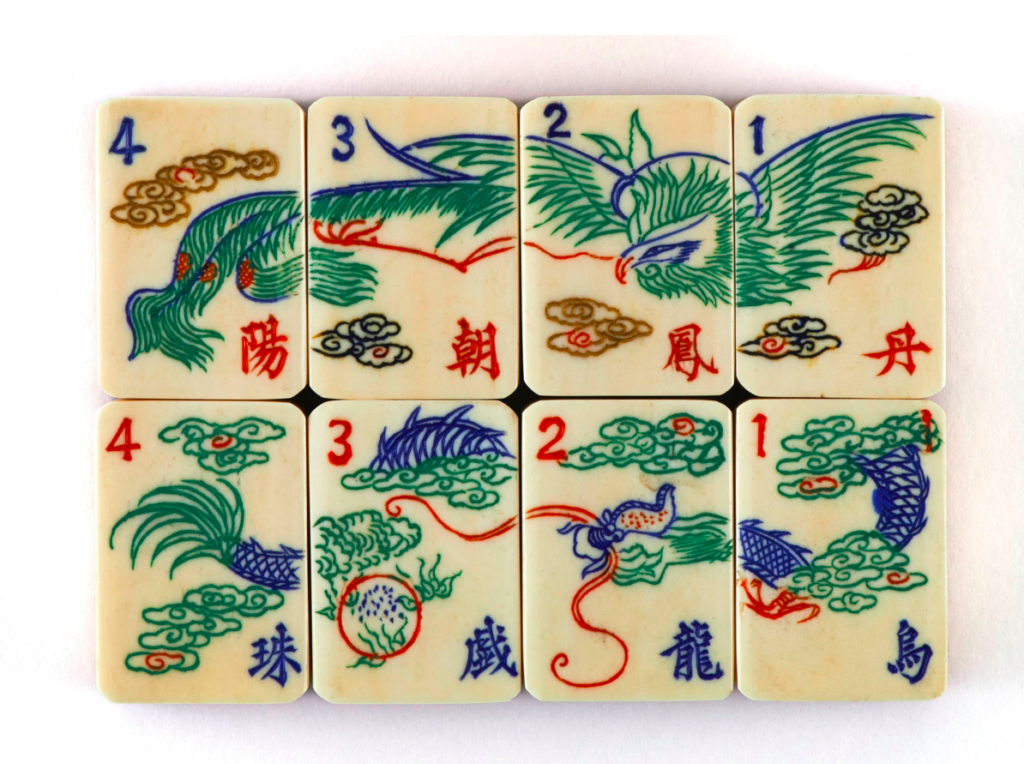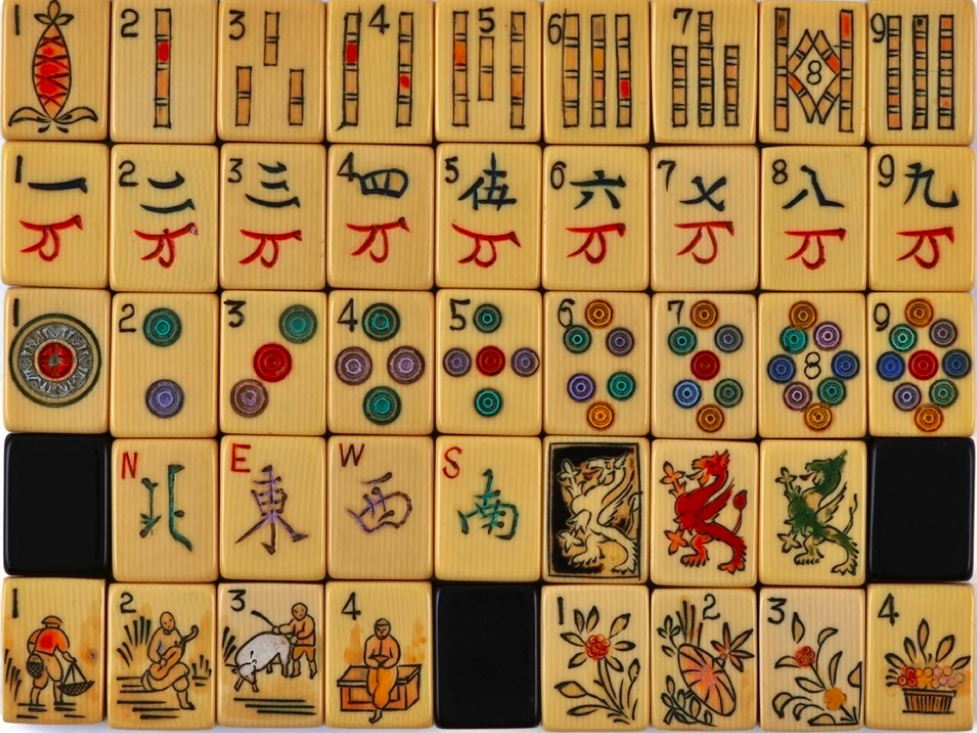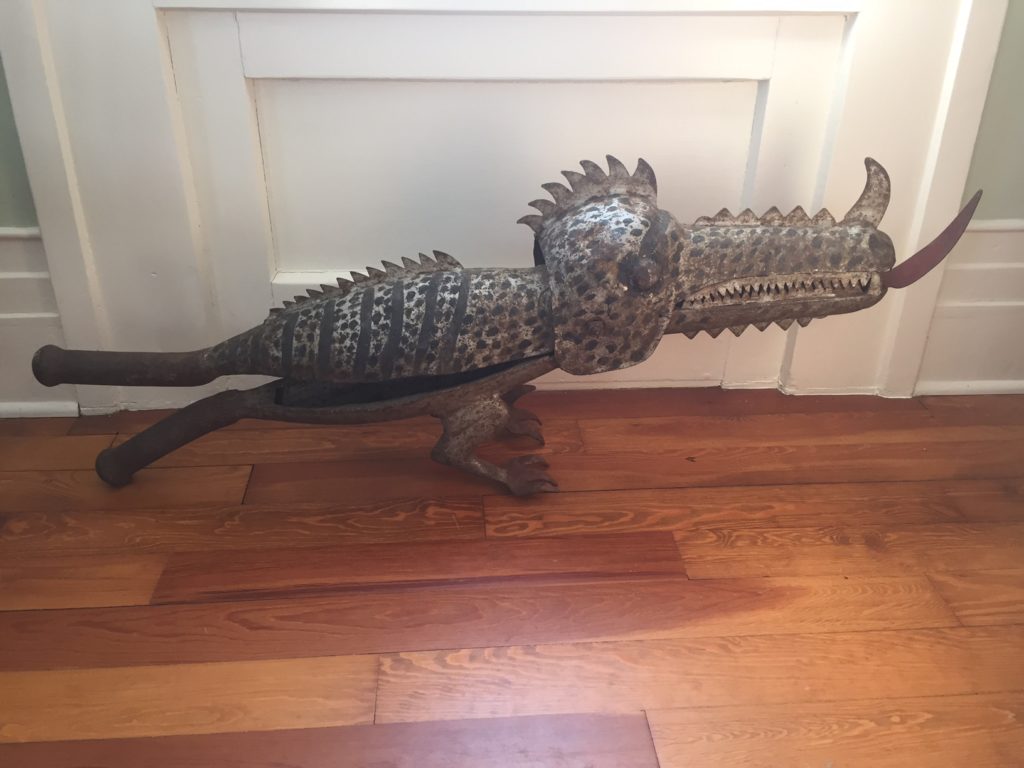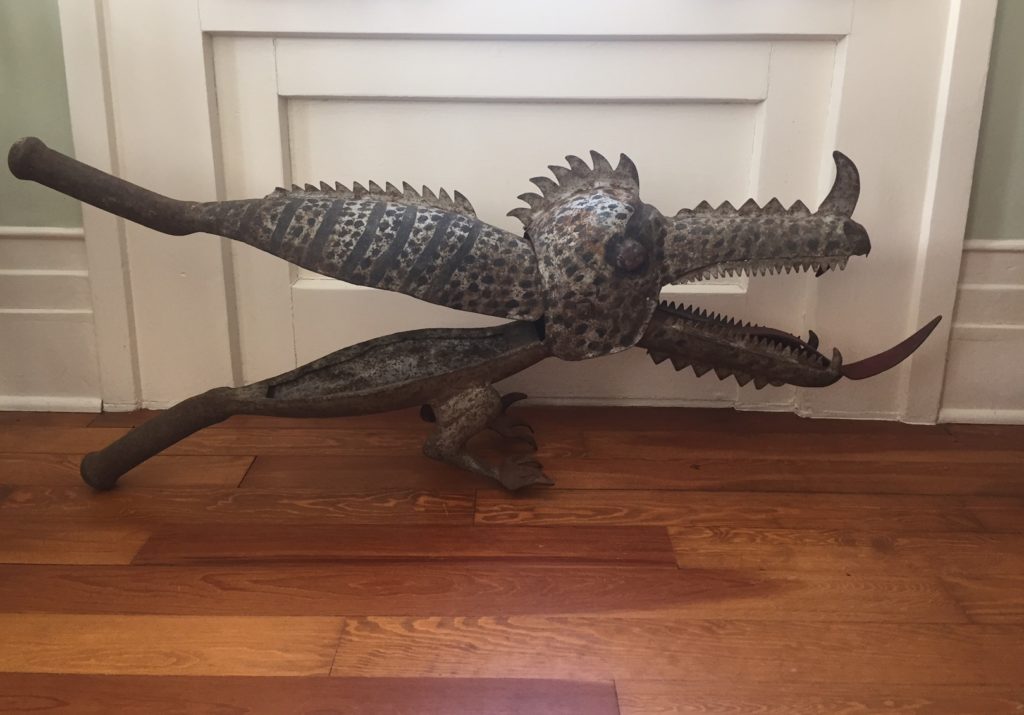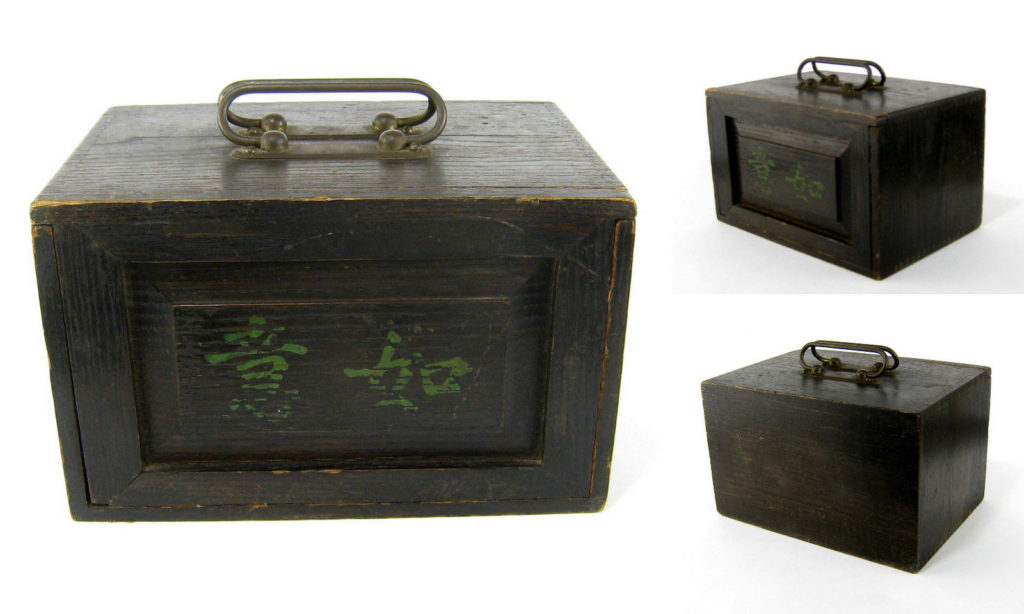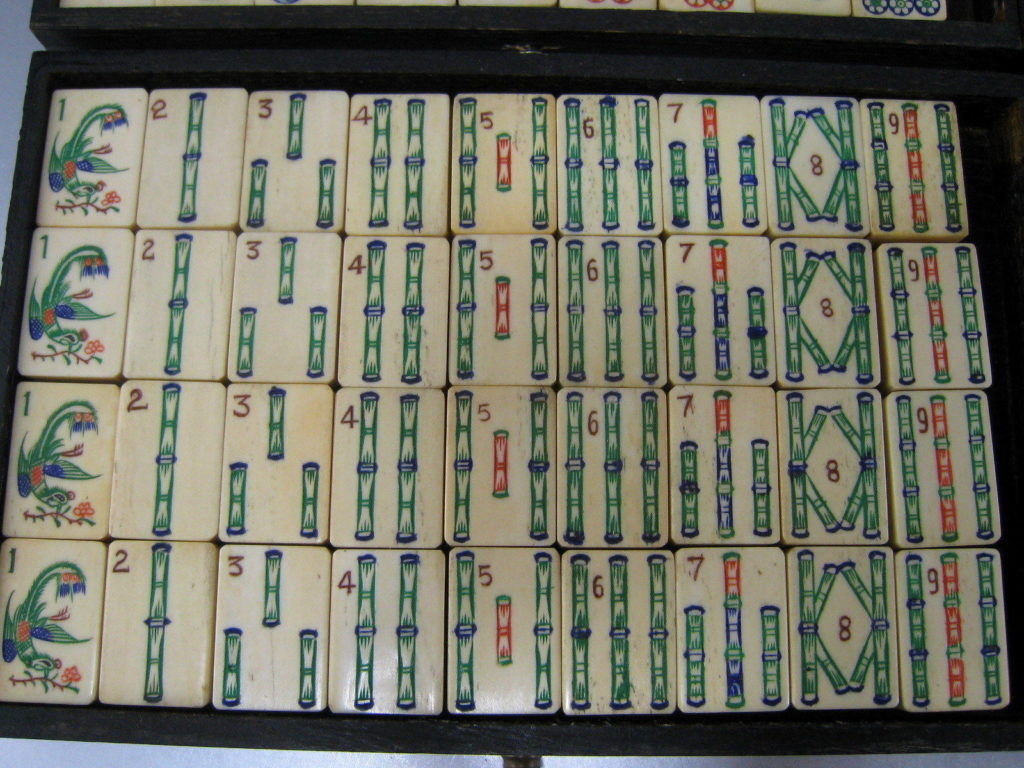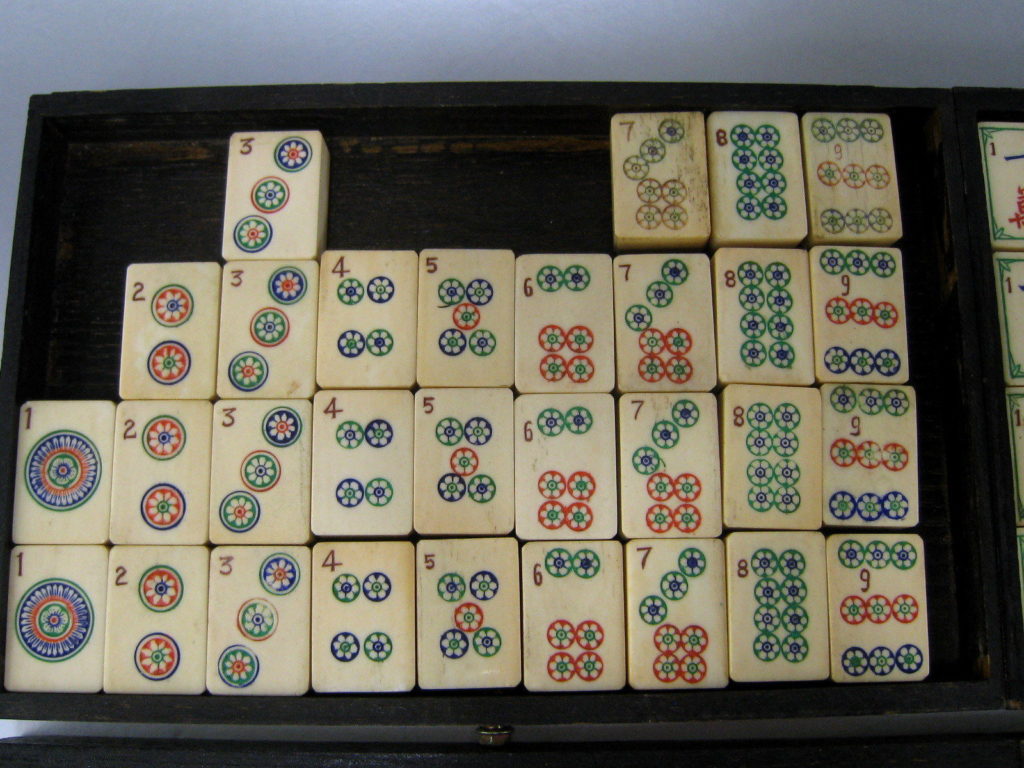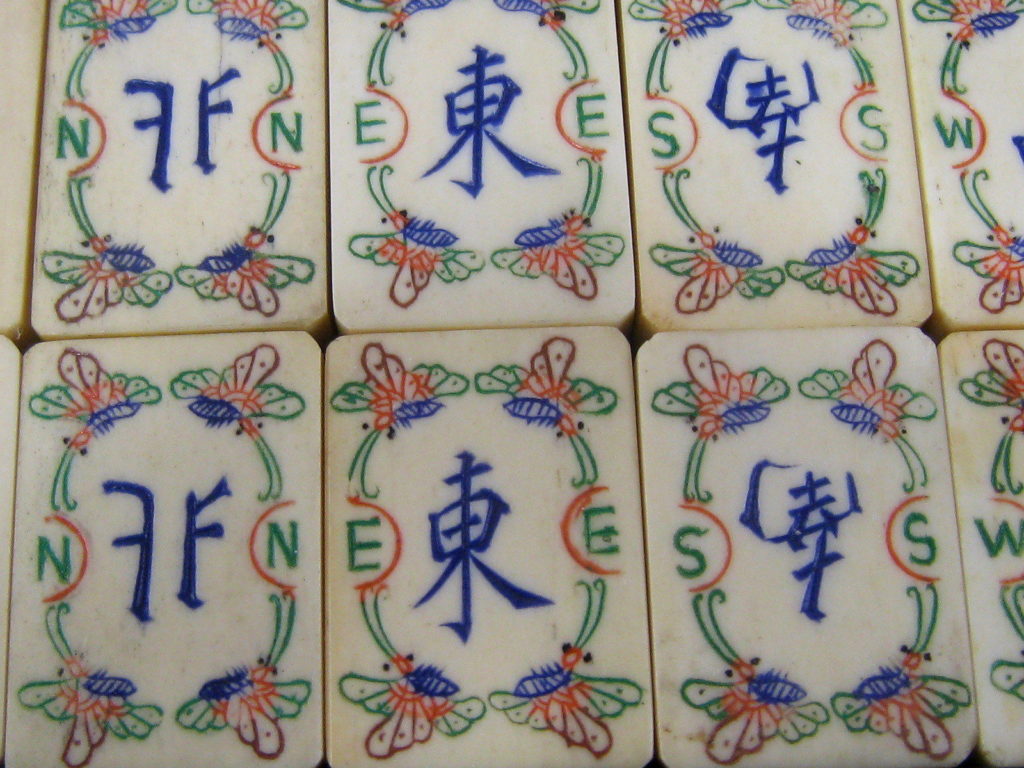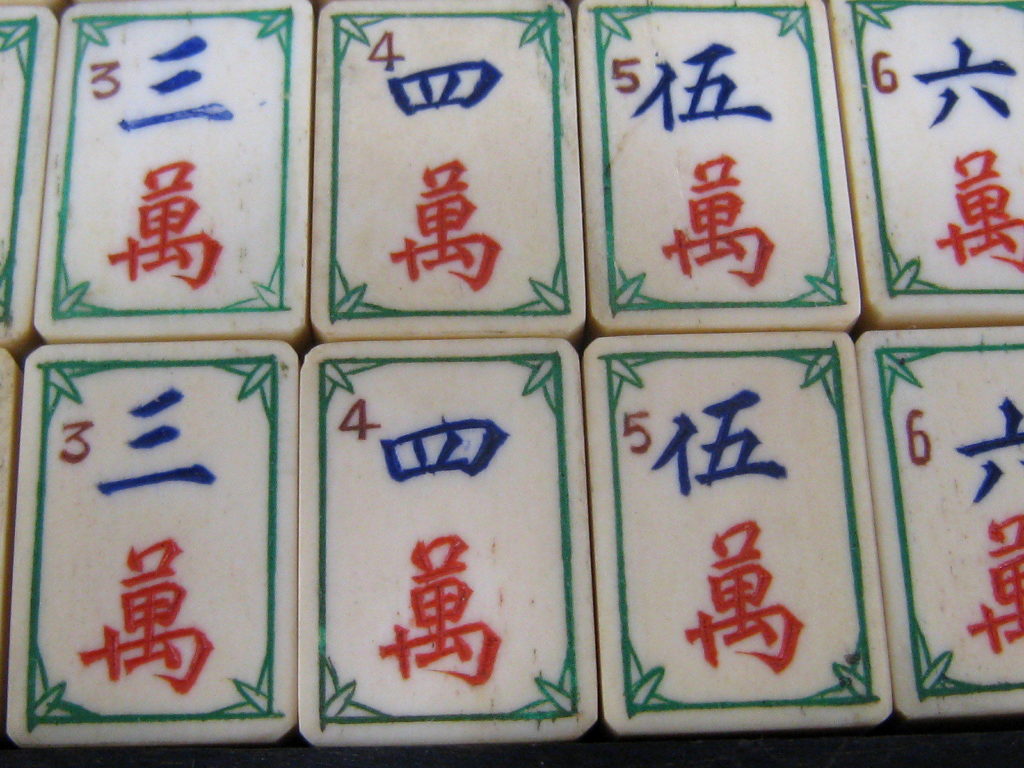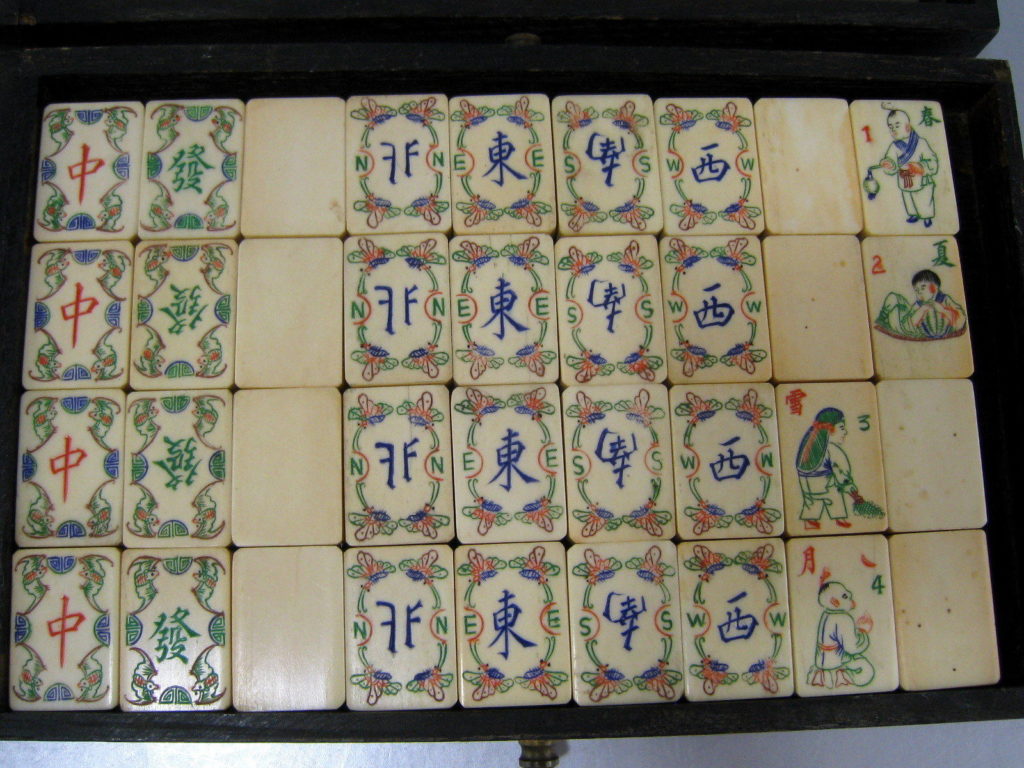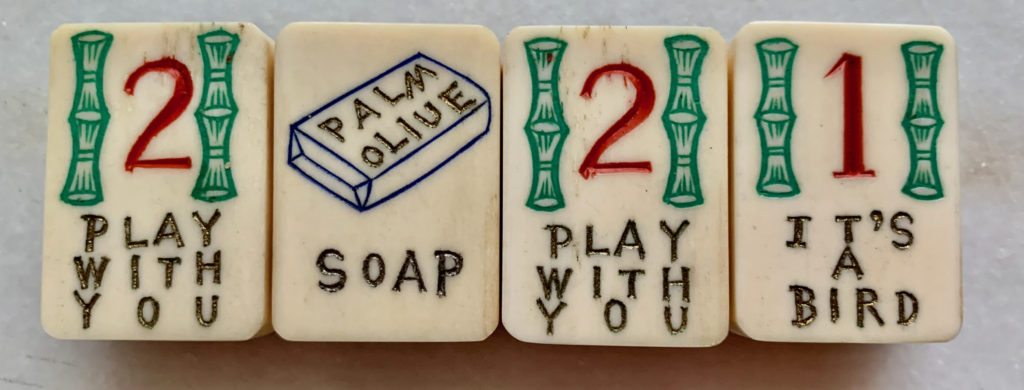
I am delighted to share this set with you. This is a one-off set: designed by a group of male friends, celebrating their friendship. (You'll see why I write this in a future post.) The bit of research I've done indicates that eight friends were together in China, between the wars. I'm pretty sure they played mahjong and at least one of them had a wonderful sense of humor. I'd like to think these men all had a great time when they were playing mahjong with these tiles. In addition to the many wonderful images, each type of tile has a saying, some we can understand today, but others remain a bit of a mystery.
I imagine this group had a lot of fun coming up with some unusual visuals and sayings for each kind of tile. Knowing what they wanted, they commissioned this high-quality set, with thick bone and thin bamboo. The bone to bamboo ratio is about five or four to one, and the set of tiles is one of the heaviest I've ever lifted. The tiles are not only deep, they're long and wide. The carver did a magnificent job. He might not even have known how to speak English or write the Roman alphabet (some of the letters are charmingly a bit off) but it's very clear what many of the tiles "had to say."
Let's start with the above group of tiles. The Bam suit has stylized Bamboo stalks, shaped something like barbells. The saying under the 2 Bams, PLAY WITH YOU, rings truer this year than it would have before, and makes me a bit teary. What we've all been missing during this Covid time is being with friends. Those of us who play mahjong have particularly missed being at the table with friends, playing the game with real mahjong tiles.
The caption under the One Bam is quite fun. Yes, the One Bam is usually a bird, but the line in place of the bird One Bam brings a smile. The phrase "IT'S A BIRD" reminds me of Superman's opening lines "It's a bird, it's a plane, no, it's Superman." Superman first "appeared" in 1938.
And how do you like the "Soap," (the nickname a lot of us have for the white Dragon), this time a bar of soap, still in its wrapper. I didn't realize that two ingredients of early Palmolive must have been derived from palm and olives. Who knew that nickname "Soap" has been around for so long? Here's a bit about Palmolive's history.
https://www.milwaukeemag.com/story-behind-this-bar-of-palmolive-soap/

The 3 Bam has "BOY CATCH ORDER" and I have no idea what that means. 4 has"GET OFF MY SUIT" maybe a take on "Get off my seat" or a reference to getting into comfortable clothing in order to relax. 5's "WHO'S STUCK" doesn't seem to have any easy explanation, but I'll go out on a limb here and say I don't know anyone who wants to be stuck back in 2020. With #6, "TIME" can you see the "font" on the tile is the same as on TIME magazine, or as close as they could get it? The magazine was first published in NYC in 1923, so this set dates to 1923 at the earliest.

In the game of Craps, a roll of 7 or 11 is a natural. That must be what the 7 Bam is about "NATURAL BONES" (bones is a nickname for dice). 8's "GARDEN GATE" may refer to some of the "named" hands in some other forms of mahjong. Although I haven't been able to find the exact hand, there are Gardens (Greta's Garden), and Gates (Heavenly Gates). I like the way "8" and "gate" rhyme too. The 9 Bam's "GIMME A POOL" remains a mystery. Perhaps a reference to a betting pool?
More on this wonderful set to come in future posts.
By the way, there's a lot to be said about playing mahjong with different types of tiles. Some friends and I played with this set –years ago of course– and it gave us a lot of pleasure and a real mental workout. I encourage you to try different sets: it may be a bit harder but it's really good for you. And fun. And isn't that what mahjong's all about?









